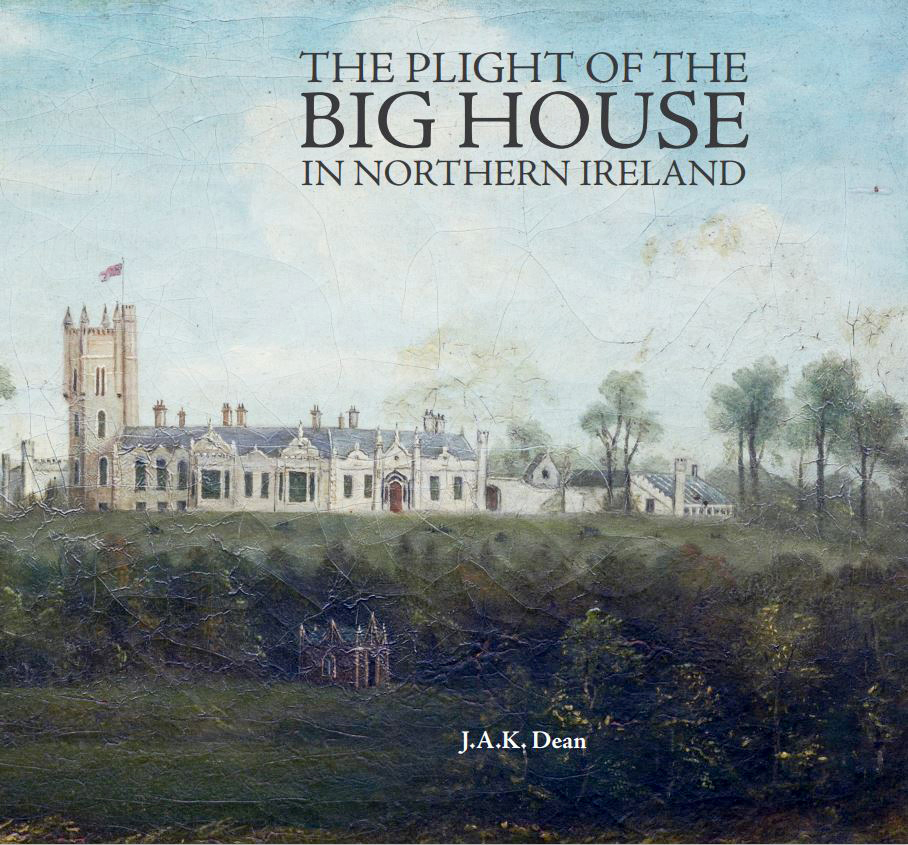
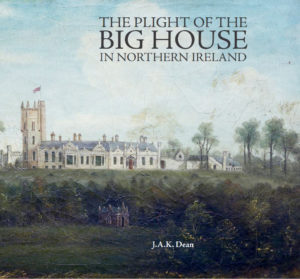 JAK Dean
JAK Dean
Ulster Architectural Heritage Society, 2020
pp 154 fully illustrated p/b
£24 ISBN: 978-0-900457-83-8
Reviewed by Philip Smith
If we compare pre-1920s Ordnance Survey maps covering present-day Northern Ireland with those of today, the extent of the loss of ‘big houses‚’ – from the grand Georgian country mansions of the aristocracy and gentry to the more modest Italianate suburban villas of the Victorian nouveau riche – is readily apparent. The eye-catching, tree-speckled demesnes of the early maps have in many instances given way to a cartographic blandness of farmland, forestry, golf courses and housing developments, with their former centrepieces either swept away or left to crumble. The increasing realisation of what we have lost, however, along with an ongoing fascination with the lives once led in such places, has kept the big house alive in our imaginations, and it is this that makes The Plight of the Big House in Northern Ireland such an irresistible and, to my mind, long-overdue read.
In line with the author’s comprehensive Irish gate-lodge series, the book is essentially a gazetteer, with the focus on Northern Ireland’s big houses that have been lost or are currently at risk. It is a roll call of those fallen in action (planned demolition, fires and several explosions), through inaction (neglect and eventual bulldozing) or, in some cases, a combination of both.
A discussion of the most common misfortunes to befall many of the featured properties forms much of the fulsome introduction. Surprising as it may seem, and despite the fate of Antrim Castle and the tragic occurrences at Tynan Abbey, political upheaval (in its early 1920s and 1969-98 iterations) had relatively little impact. Many more significant mansions, among them Belvoir, Drumilly, Gill Hall, Langford Lodge, Pomeroy House and Roslea, to name a few, met their ends at the hands of government agencies, the Forestry Commission possessing a particularly lamentable record in this regard. But this was an era in which even the National Trust was not immune to philistinism, as the fate of Killynether House testifies. In a real sense, however, both the state and the trust were merely bringing down the curtain on a spiralling melodrama – commencing with the passing of the Land Acts and accelerated by the effects of two world wars and heavy taxation – that had proven the undoing of many landed families and their homes.
There is broad diversity in the size and architectural quality of the houses included here, from Drumbanagher – the magnificent 1830s Italianate pile constructed for Maxwell Close by William Playfair of Edinburgh – to Farrancassidy, a charmingly low-profile early Georgian vernacular farmhouse. Worth highlighting is the inclusion of many of the comparatively smaller residences that populated Belfast’s hinterland. Built largely by the town’s leading merchants from the late 1700s to the mid-1800s, these owed their existence to the settlement’s growing prosperity, only for most to be eventually destroyed by it. Both houses and grounds were eaten up by the march of the late Victorian and Edwardian terraced developments, many of whose streets adopted the names of the properties they consumed. These houses almost merit a publication in their own right.
Though the story of most of the buildings here is a melancholy one, greater awareness and the advent of listing and grant-aid have, as the author observes, contributed to a decrease in the rate of destruction in recent decades. But a reliance on statuary protection is not the long-term answer. Big houses survived for generations because they possessed both purpose and the means of support. The same is as true today as it was two and a half centuries ago.
Philip Smith is a historian who works for the Department for Communites Historic Environment Division, Northern Ireland.
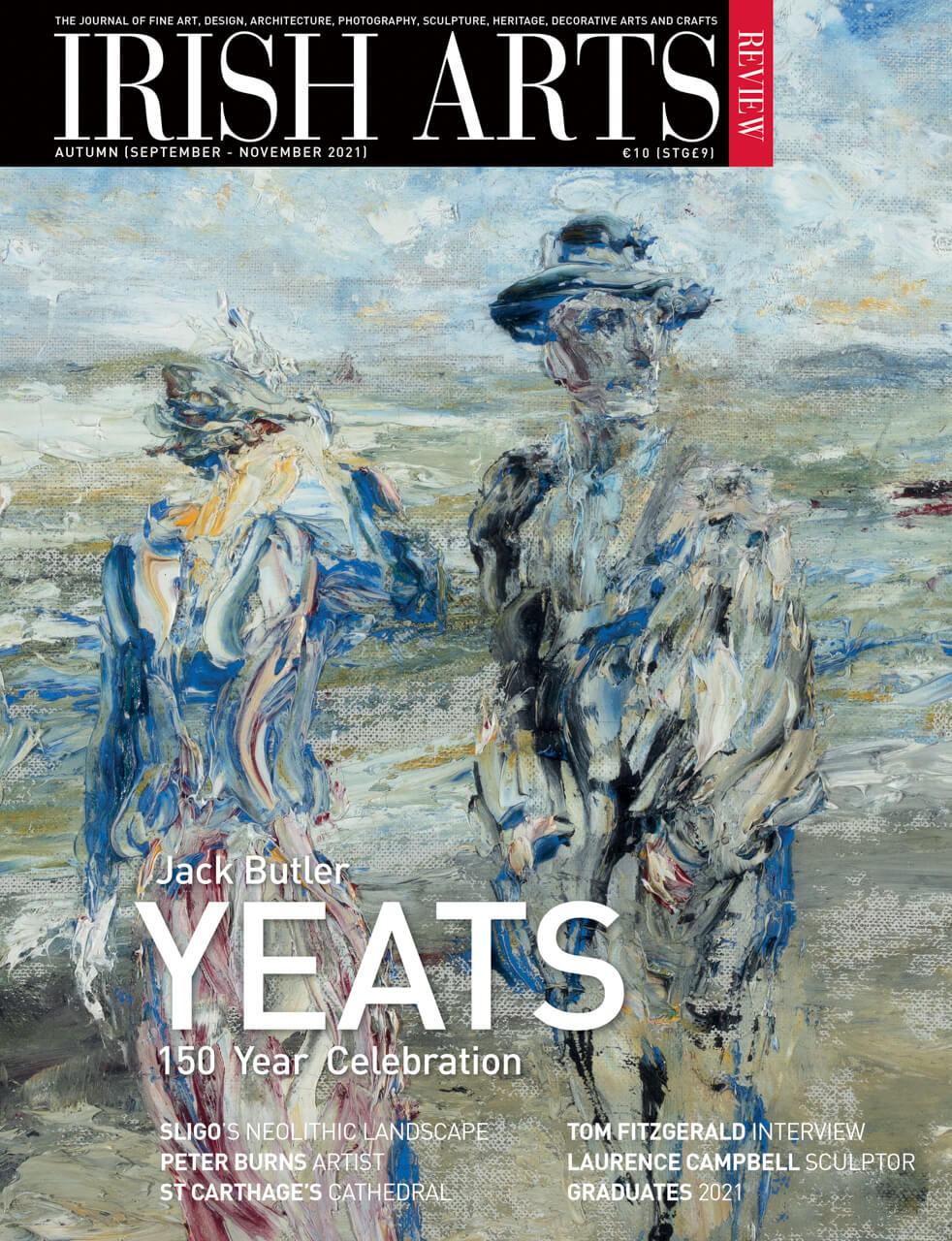

John Noel Smith’s journey continues with an enlivening sense of momentum, writes Margarita Cappock
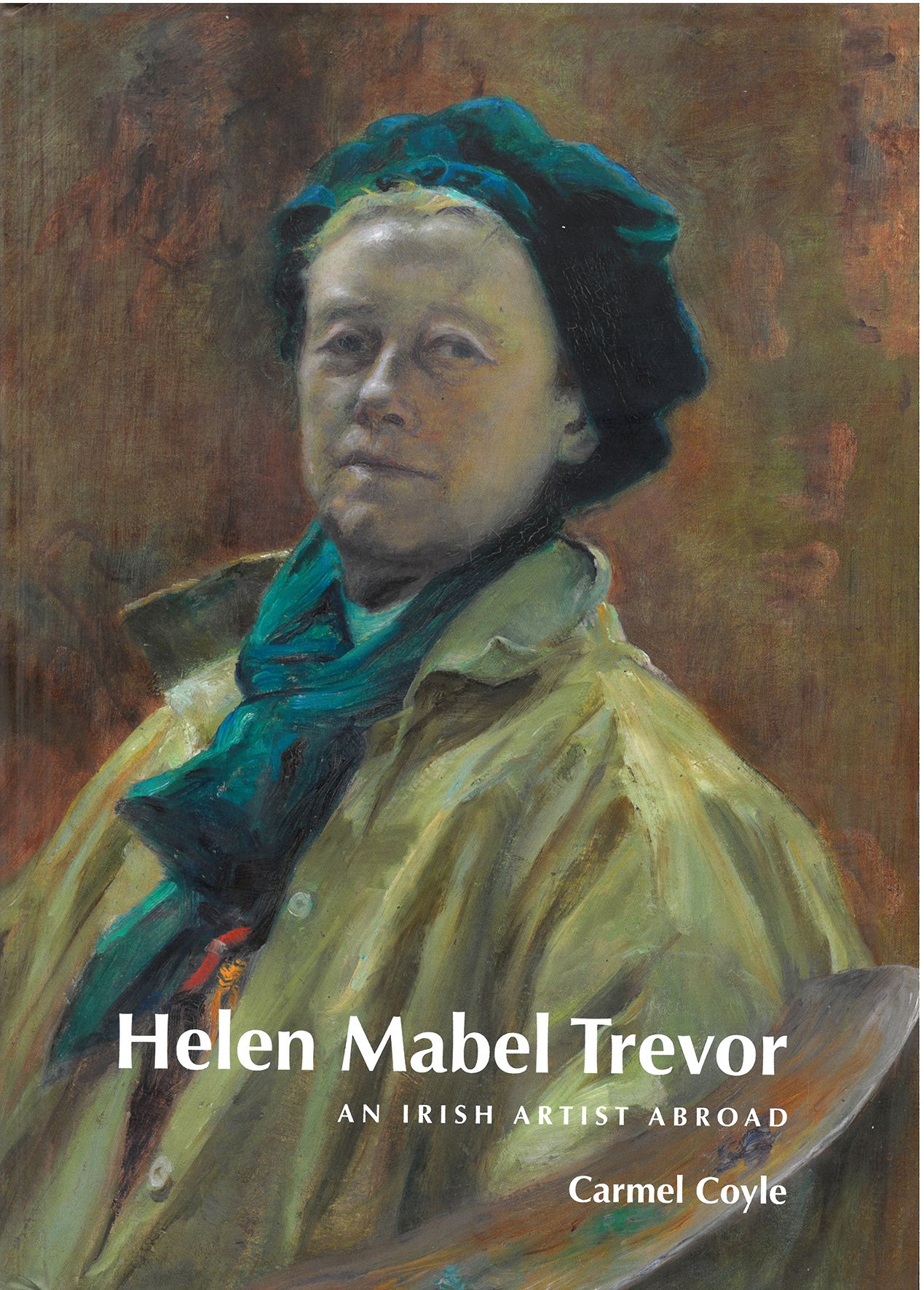
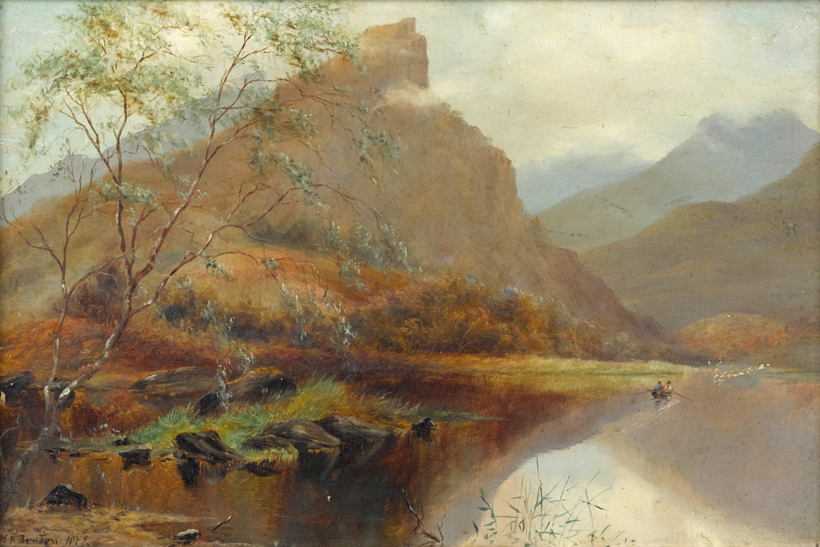
Mary Stratton Ryan looks at the life of Mary Kate Benson, a tentative figure in the Irish art pantheon, on the centenary of her death